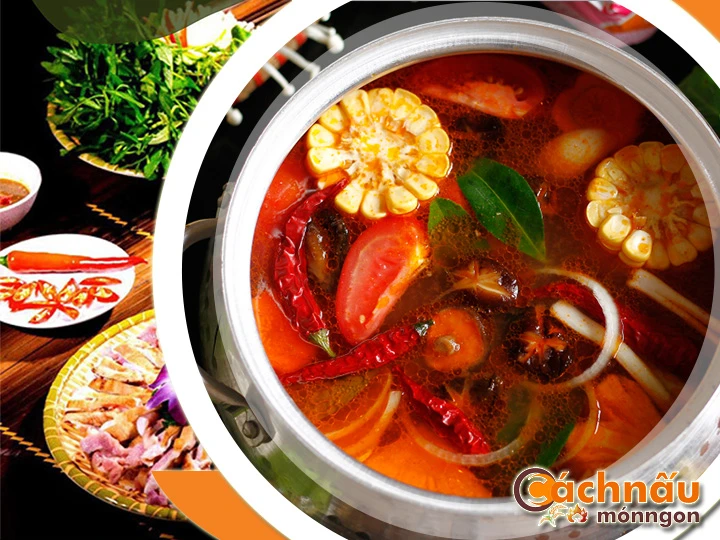Discover the Traditional Rabbit Hot Pot Secrets for Food Lovers - Lẩu thỏ
Discover the Traditional Rabbit Hot Pot Secrets for Food Lovers - Lẩu thỏ
Blog Article
Hot pot rabbit, a scrumptious and heritage-inspired recipe, has been valued across multiple cultures and locales for centuries.

This comprehensive guide explores every part you need to be aware of about rabbit hot pot, from its ancient origins to modern variations, health-focused properties, and methodical instructions for creating the top-tier meal at home. Whether you are a culinary expert or a novice cook, this guide will stimulate and assist you to achieve expertise of rabbit hot pot.
DIVING INTO THE HISTORY IN ADDITION TO TRADITIONS FOCUSED ON {BRAISED RABBIT DISH|HEARTY RABBIT MEAL|RABBIT HOT POT|RABBIT STEW|BUNNY CASSEROLE|RABBIT CUISINE|STEWED RABBIT
Rabbit hot pot is a unique and traditional dish with profound traditions in many areas. Its appeal stems not only from its flavorful flavor but also from its legacy and traditions.
Rabbit hot pot stands as a exceptional and heritage-rich dish with rich cultural connections in various regions. Its appeal stems not only from its flavorful flavor but also from its legacy and traditions.
- The Origins: Stewed rabbit originated in villages where small game were a common, sustaining food source. In China’s past, it was a beloved dish, particularly during special occasions.
- Expansion Across Areas: In the West like Spain, rabbit was commonly found in slow-cooked dishes, becoming modern versions of braised dishes as the dish gained global appeal.
2. Rabbit Stew influencing Eastern Heritage.
- China: Known as the traditional rabbit hot pot, rabbit hot pot is popular in the culinary traditions of Sichuan, recognized for its pungent flavors and cherished at intimate family events.
- Within Korea and Japan: While relatively rare, rabbit hot pot is infrequently served as a healing cuisine in South Korea, or based on traditional nabemono dishes in Japan, combined with local seasonal crops and condiments.
- Within Vietnam: Although rabbit hot pot is not typically eaten every day, it is appreciated during special occasions or in countryside where rabbit meat is readily available. It is often seasoned with distinctive spices such as citronella, aromatic ginger, and hot chili, paired with fresh vegetables like water spinach, green mustard, or neptunia leaves. This dish is enjoyed for its exceptional taste and dietary value, frequently enjoyed during festive occasions with loved ones.
Tại Việt Nam, tuy không thực sự là món ăn phổ biến đều đặn mỗi ngày, nhưng thường thấy trong những dịp đặc biệt hoặc ở các vùng quê, nơi thịt thỏ dễ dàng tìm thấy. Thường được nấu cùng mùi thơm từ sả, thơm gừng, và ớt tươi, kết hợp với những loại rau như kangkong. Món ăn này nổi bật trong các bữa tiệc nhờ sự đặc sắc trong hương vị và lợi ích sức khỏe, thường xuất hiện phổ biến ở những buổi hội họp.
3. Traditional Rabbit Cuisine throughout Food Traditions in Europe.
- In France: Frequently enjoyed as a hearty stew with wine-infused broth, fresh rosemary and other herbs, and earthy roots. Rabbit hot pot is a cherished recipe for celebratory occasions.
- Across Italy: The dish referred to as “Cacciatore”, featuring rabbit stewed in tomato and wine sauce, is a culinary root of hot pot-style rabbit dishes.
HOW TO COOK RABBIT HOT POT: RECIPES AND TECHNIQUES
Rabbit hot pot is a adaptable dish that combines fresh ingredients, savory broths, and specialized methods to create a filling and flavorful experience. Below are essential tips into the key recipes and methods to excel in rabbit hot pot.
Basic Recipe for Rabbit Hot Pot
* Required Ingredients:
- 1 whole rabbit (cut into pieces)
- 4 cups of broth (bone broth)
- Vegetables (potatoes)
- Spices and herbs (ginger)
- Seasonings (chili paste)
- Optional: rice for serving
* Cooking Instructions:
- Getting the Rabbit Ready: Wash and chop the rabbit into pieces. Prepare with a pinch of salt, pepper, and a drizzle of soy sauce for 30 minutes to enrich the flavor.
- Create the Broth: Heat a vessel with a small amount of oil. Cook garlic and ginger until fragrant. Add your preferred broth and bring it to a boil.
- Cook the Meat: Add the rabbit pieces into the pot and let them simmer on a low flame for around half an hour until tender.
- Add Vegetables: Add your preferred vegetables and cook until they are perfectly cooked but still bright.
- Present: Transfer the hot pot lẩu thỏ đặc biệt to a large bowl. Serve with accompaniments and add-ons such as rice or noodles.
Key Techniques for Cooking Rabbit Hot Pot
- Marination:
. Marinate the rabbit with a mixture of salt, pepper, and aromatics to amplify its original taste.
. For more richness, use cooking wine or a mix of fragrant herbs.
- Adding Ingredients Strategically:
. Start by boiling the rabbit in the broth to extract its savory taste.
. Layer vegetables strategically based on their texture needs.
- Optimal Cooking Duration:
. Avoid letting it dry out the rabbit, as it can turn chewy.
. Test for readiness by checking if the meat easily separates from the bone.
- Broth Adjustments:
. Adjust the broth by adding more spices as needed.
. Experiment with different flavor profiles, such as spicy Sichuan-style variations.
Tips for Success
- Quality Matters: Always choose high-quality rabbit and in-season greens for the best results.
- Balance Flavors: Be mindful of the spiciness in the broth. Sample and refine frequently during cooking.
- Sauce Pairings: Offer a range of sauces like sesame paste or soy-based dips to enhance the dining experience.
- Presentation: Use a communal pot or serve the hot pot at the center of the table to encourage communal dining.
By mastering these cooking techniques, you can make a rabbit hot pot that’s tasty and beautifully presented, making it a star attraction for any gathering or dining experience.
Report this page
